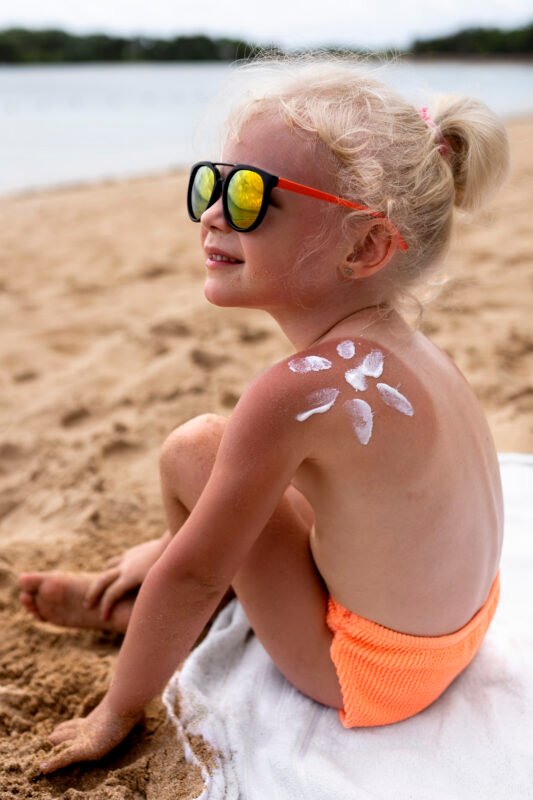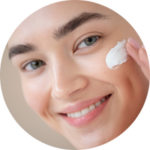The Ultimate Guide to SPF: How Much You Really Need and Why
When it comes to protecting your skin from the sun’s harmful rays, SPF (Sun Protection Factor) is one of the most important factors to consider. Whether you’re spending a day at the beach, running errands, or just walking outside, SPF plays a critical role in safeguarding your skin from damage. But how much SPF do you really need, and why is it so important? This comprehensive guide will break down the essentials of SPF, explain how it works, and help you choose the right level of protection for your skin type and activities.
What is SPF?
SPF, or Sun Protection Factor, is a measure of how much protection a sunscreen provides against UVB rays, which are responsible for causing sunburn and contributing to skin cancer. The higher the SPF number, the greater the level of protection the sunscreen offers.
SPF works by blocking or absorbing UVB rays and preventing them from penetrating your skin. However, it’s important to understand that SPF only measures protection against UVB and not UVA rays, which can cause premature aging, wrinkles, and contribute to skin cancer. To protect your skin against both UVA and UVB rays, you should choose a broad-spectrum sunscreen.
How Does SPF Work?
SPF is calculated by the amount of time it takes for the skin to burn while wearing sunscreen compared to how long it would take without sunscreen. For example, if you wear SPF 30, it means that you can stay in the sun 30 times longer without burning than you could without sunscreen.
Here’s a simple breakdown:
-
SPF 15 blocks about 93% of UVB rays.
-
SPF 30 blocks about 97% of UVB rays.
-
SPF 50 blocks about 98% of UVB rays.
-
SPF 100 blocks about 99% of UVB rays.
While a higher SPF provides more protection, it’s important to note that no sunscreen can offer 100% protection from UV radiation.
Why is SPF Important?
1. Preventing Sunburn
SPF is designed to protect your skin from sunburn caused by UVB rays. Sunburn occurs when your skin absorbs too much UVB radiation, which causes redness, pain, and inflammation. Regular sunburn can lead to long-term skin damage, so wearing sunscreen with adequate SPF can prevent this.
2. Reducing the Risk of Skin Cancer
Sun exposure is a leading cause of skin cancer, and UVB rays are directly linked to DNA damage in the skin. Melanoma, basal cell carcinoma, and squamous cell carcinoma are the most common types of skin cancer caused by UV radiation. Using sunscreen with an appropriate SPF helps reduce the risk of skin cancer by blocking harmful UV rays.
3. Preventing Premature Aging
Exposure to UVA rays can lead to premature skin aging. These rays penetrate deeper into the skin and cause wrinkles, fine lines, sunspots, and loss of elasticity. A broad-spectrum sunscreen with an adequate SPF helps to prevent these signs of aging, keeping your skin looking youthful for longer.
How Much SPF Do You Really Need?
The amount of SPF you need depends on several factors, including your skin type, the time you’ll spend in the sun, and your activities. Here’s how to choose the right SPF for your needs:
1. Skin Type and Sensitivity
People with fair or light skin are more susceptible to sunburn and skin damage, so they should opt for higher SPF (such as SPF 30 or SPF 50) for greater protection. Those with darker skin tones may have more natural protection from the sun, but it’s still important to use sunscreen, preferably SPF 30 or higher, to protect against skin damage and the risk of skin cancer.
2. Daily Use vs. Extended Exposure
For daily use, especially if you’re not spending long hours in direct sunlight, SPF 30 is typically sufficient for most skin types. However, if you’re going to be spending extended periods outside—whether at the beach, hiking, or engaging in outdoor sports—SPF 50 or even SPF 100 can offer more protection and help prevent sunburn and long-term skin damage.
3. Reapplication is Key
Even if you’re wearing a high-SPF sunscreen, it’s essential to reapply sunscreen every two hours. Sunscreen can wear off due to sweating, swimming, towel-drying, or friction from clothing. Reapplying ensures that you maintain adequate protection throughout the day.
SPF Myths Debunked
There are several common myths about SPF that could cause confusion when it comes to choosing the right protection for your skin. Let’s debunk some of them:
Myth 1: Higher SPF Means You Never Need to Reapply
Although SPF 50 or SPF 100 offers stronger protection than lower SPF levels, you still need to reapply sunscreen regularly—especially if you’re swimming or sweating. Sunscreen can break down over time, so even with a higher SPF, it’s not a one-time application.
Myth 2: You Don’t Need Sunscreen on Cloudy Days
UV rays can penetrate through clouds, meaning that you can still get sunburned on overcast days. It’s important to wear sunscreen year-round, even on cloudy or rainy days, to protect your skin from both UVA and UVB rays.
Myth 3: Darker Skin Doesn’t Need Sunscreen
While it’s true that people with darker skin have more melanin, which provides some natural protection against UV radiation, it’s still important for everyone to wear sunscreen. Darker skin is not immune to sunburn, premature aging, or skin cancer. Therefore, everyone should use SPF 30 or higher for daily sun protection.
Myth 4: SPF in Makeup Is Enough
Many makeup products contain SPF, but the amount is usually not enough to provide full sun protection on its own. To get the protection listed on the label, you would have to apply a thick layer of makeup, which most people don’t do. It’s better to apply a dedicated sunscreen underneath your makeup for full protection.
How to Apply Sunscreen Correctly
Making sure you apply sunscreen properly is as important as selecting the appropriate SPF. Here are some suggestions to ensure you apply sunscreen correctly:
-
Make sure you use the right amount of product Most people don’t wear enough sunscreen. It is recommended to apply around 1 one ounce (about one shot glass) to cover your body and apply the equivalent of a nickel on your face.
-
Application 15 minutes prior to sun exposure Give your sunscreen time to penetrate the skin before it begins to work. Apply it for at minimum 15 minutes prior to the time you leave for the outdoors.
-
Apply sunscreen regularly Reapply sunscreen each 2 hours, and more frequently if you’re sweating or swimming.
-
Don’t forget to cover areas that are difficult to reach Take care to apply sunscreen to the areas you often miss such as your ears, neck’s back, and on the areas on the top of your feet.
Choosing the Right Sunscreen for You
There are numerous types of sunscreens that are available, including sprays, lotions and gels. Here’s how you can choose the most appropriate sunscreen for you:
1. Lotion Sunscreens
Lotion sunscreens are among the most popular and are applied to all types of skin. They are generally hydrating, which is why they are suitable when you have dry or irritated skin.
2. Spray Sunscreens
Spray sunscreens are ideal to use quickly and simple to apply on large areas of your body. Be sure to use enough sunscreen and massage it into to ensure a uniform coverage.
3. Gel Sunscreens
Gel sunscreens are commonly employed for acne-prone or oily skin due to their an easy, non-greasy feel that is absorbed quickly.
4. Mineral and. Chemical Sunscreens
-
Mineral sunblocks comprise zinc oxide or titanium dioxide and form physical barriers on the skin. It is less likely that they will cause irritation skin that is sensitive.
-
Chemical sunblocks are able to absorb ultraviolet rays and transform the heat into. They are typically more easy to apply and appear more supple upon the skin.
How to Choose the Best SPF for Your Activities
When selecting the right SPF, it’s also important to consider the type of activities you’ll be engaging in. Some activities may expose you to more direct sun or require more frequent reapplication, making it essential to tailor your sunscreen choice to your lifestyle. Here’s how to choose the right SPF based on your activities:
1. For Outdoor Sports and Swimming
If you plan on spending a lot of time outdoors engaged in activities such as swimming, hiking, running, or cycling, you’ll need a water-resistant sunscreen with a higher SPF. These activities often expose your skin to UV rays for extended periods, and sweat or water can cause sunscreen to wear off quickly.
For these situations, opt for an SPF 50 or higher to ensure adequate protection. Water-resistant sunscreens are formulated to stay on your skin even when you sweat or swim, offering long-lasting protection. Make sure to reapply your sunscreen every two hours or after swimming or sweating. Look for sport sunscreens specifically designed to provide extra protection during intense physical activities.
2. For Beach Days
Spending time at the beach is one of the most intense sun exposure scenarios, as the sun’s rays are reflected off the water and sand. If you’re going to the beach, SPF 50 or higher is recommended, especially if you plan to spend hours in the sun. Choose a broad-spectrum sunscreen to protect your skin from both UVA and UVB rays. Additionally, consider applying a waterproof sunscreen if you’ll be swimming or sweating in the heat.
Remember that the sun’s intensity is greater around midday (between 10 AM and 4 PM), so extra precautions during these hours are important. Stay in the shade during peak sun hours if possible, and reapply sunscreen often.
3. For Daily Use
If you’re just going about your daily routine, walking outside or running errands, an SPF 30 or SPF 50 sunscreen is typically sufficient. Even though you might not be spending long hours in the sun, daily sun exposure can still add up over time and contribute to premature aging and skin cancer risk.
For daily use, opt for a sunscreen that you can easily incorporate into your skincare routine. Many moisturizers and foundations now come with built-in SPF, but it’s essential to apply enough product to meet the recommended SPF level. If you’re using a sunscreen that’s part of your makeup or moisturizer, make sure to layer it on generously for proper protection.
4. For Sensitive or Fair Skin
If you have fair skin, or if your skin burns easily, a higher SPF (SPF 50 or more) is crucial for adequate protection. Those with sensitive skin, or conditions like rosacea or eczema, should also opt for mineral sunscreens with zinc oxide or titanium dioxide. These ingredients are less likely to irritate the skin compared to chemical sunscreens and are often a better choice for those with sensitive or acne-prone skin.
Additionally, if you have a history of sunburns or are prone to developing hyperpigmentation, always choose a sunscreen with SPF 50 or higher to minimize the risk of further skin damage. Regular application will also help maintain your skin’s health and prevent sunspots or uneven skin tone.
5. For Long-Term Skin Health
Incorporating SPF into your daily skincare routine is one of the most effective ways to protect your skin and maintain its long-term health. Sunscreen not only prevents sunburn but also helps protect against photoaging, which can lead to wrinkles, fine lines, and loss of elasticity. Furthermore, regular use of SPF helps protect against UV radiation that can damage your skin’s DNA and lead to skin cancer.
For long-term skin health, consider using a broad-spectrum sunscreen with SPF 30 or higher every day, even when it’s cloudy. Even minimal, consistent sun exposure can add up over time and contribute to skin damage, so protecting your skin every day is key.
Understanding SPF Beyond the Number
While the SPF number provides valuable information about how much protection a sunscreen offers, it’s not the only factor that matters when it comes to skin protection. Here’s what to consider beyond just SPF:
1. Broad-Spectrum Protection
As mentioned earlier, SPF only measures protection against UVB rays. To fully protect your skin from both UVA and UVB rays, you need a broad-spectrum sunscreen. UVA rays penetrate deeper into the skin and are responsible for aging signs like wrinkles and sunspots. UVB rays cause sunburn and are primarily responsible for skin cancer. A broad-spectrum sunscreen offers protection from both, ensuring more comprehensive sun defense.
2. Water Resistance
If you plan on swimming, sweating, or engaging in physical activity, choose a water-resistant sunscreen. Water-resistant formulas provide protection even when you get wet, although they need to be reapplied after a certain period or after towel-drying. Be sure to check the packaging for how long the sunscreen remains effective when exposed to water (usually 40 to 80 minutes).
3. Ingredient Considerations
The ingredients in your sunscreen can play a role in your skin’s health. If you have sensitive skin, you may want to avoid chemical filters like oxybenzone, octinoxate, or avobenzone, as these can cause irritation. Instead, opt for mineral sunscreens that contain zinc oxide or titanium dioxide, which provide physical barriers against UV rays without irritation.
4. Expiry Date
Sunscreens have a shelf life, and expired products may not offer the same level of protection. Check the expiration date on your sunscreen before applying it. In general, sunscreens are effective for about two to three years after manufacture, but they should be replaced if the product changes in texture, color, or smell.







